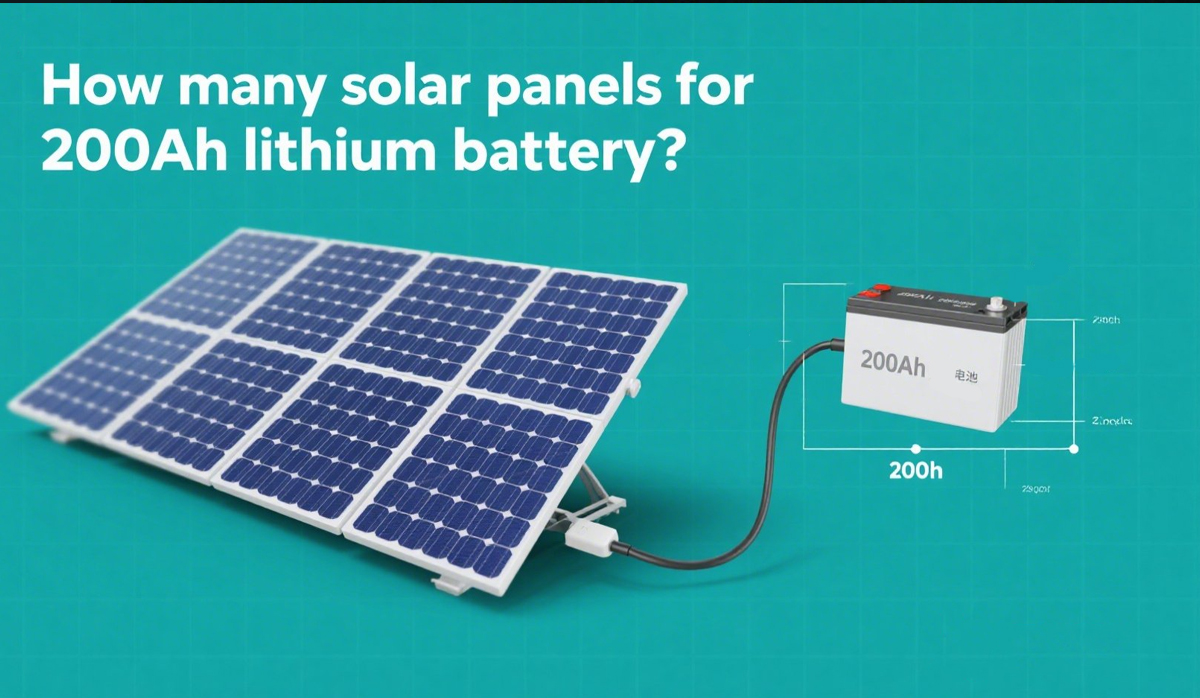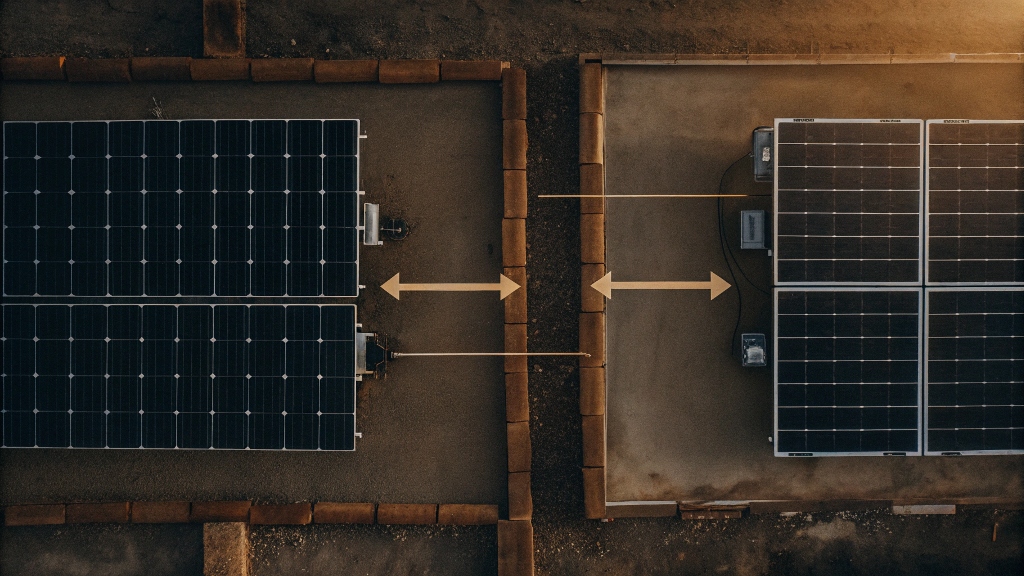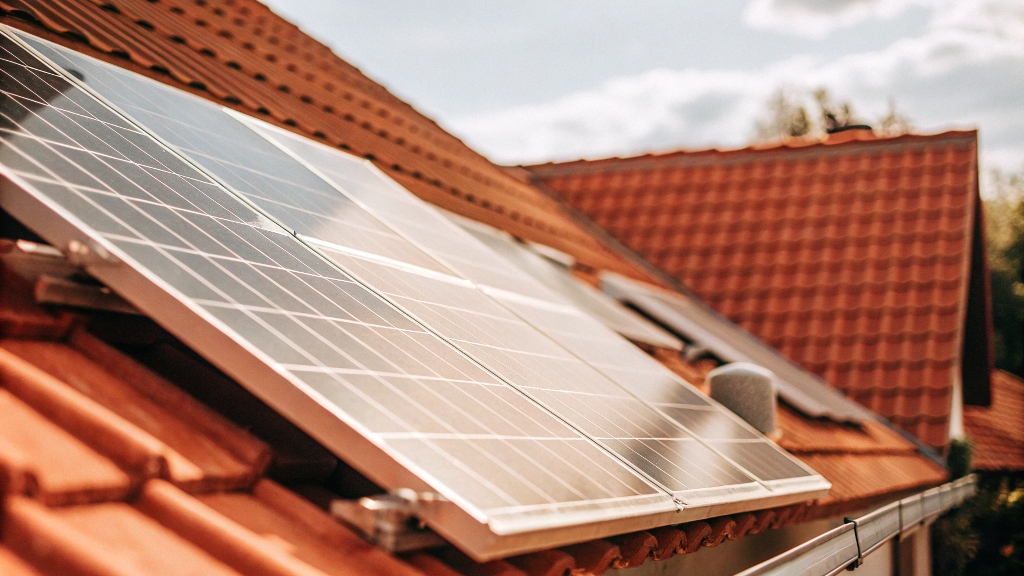¿Cuántos paneles solares necesito una batería de litio de 200Ah?? – A Guide to Stackable Solar Batteries and Energy System Design
1. Introducción

In a world moving rapidly towards renewable energy, understanding how to design an efficient solar energy system is paramount. One of the common questions among solar enthusiasts and system designers is: "How many solar panels do I need for a 200Ah lithium battery?" This article addresses that question by explaining the fundamentals of battery capacity and solar panel output, offering a practical step-by-step calculation, and showing why a modular approach—such as using baterías solares apilables—can provide the flexibility and scalability essential for modern energy systems.
En GYCX Solar, we specialize in providing integrated solutions that include advanced energy storage and power conversion products, such as our Batería de litio apilable, Bateria solar, y inversor solar. These products not only boost efficiency but also ensure that your solar installation can expand as your energy needs grow.
2. Understanding Battery Capacity and Solar Panel Basics
Before diving into how many solar panels are needed, it’s important to understand two key concepts: battery capacity and solar panel output.
Capacidad de la batería
Battery capacity is typically measured in ampere-hours (ah) y kilovatio-hora (kWh). For a 200Ah lithium battery, the energy capacity depends on the battery voltage. Por ejemplo, if you have a 48V system, a 200Ah battery theoretically stores:
[texto{Energía (kWh)} = frac{48 texto{ V} veces 200 texto{ ah}}{1000} = 9.6 texto{ kWh}
]
This figure represents the total energy storage under ideal conditions. In real-world applications, factors such as depth of discharge (Departamento de Defensa) and efficiency affect the usable capacity.
Solar Panel Output
Solar panels are rated by their wattage, and their actual energy generation depends on:
- Horas pico del sol: The number of full sunlight hours per day.
- Panel Efficiency: The efficiency of the solar cells.
- Orientation and Shading: How panels are installed and environmental conditions.
Por ejemplo, a 300W panel operating for 5 peak sun hours per day could generate:
[300 texto{ W} veces 5 texto{ H} = 1500 texto{ Wh or } 1.5 texto{ kwh/día}
]
Knowing these basics allows you to set up a system that reliably charges your battery bank.
3. Key Factors Affecting Charging of a 200Ah Lithium Battery

Several variables impact how many solar panels you need to effectively charge a 200Ah lithium battery:
a. Daily Energy Consumption and Charging Needs
Determine how much energy you expect to store or use from the battery daily. If your battery’s 9.6 kWh capacity is only partially utilized (due to recommended DoD, often around 80%), then you have about 7.68 kWh de energía utilizable.
b. Solar Panel Wattage and Peak Sun Hours
The wattage of your solar panels and the average number of peak sun hours in your location will dictate total energy production. Por ejemplo, if the local climate provides 5 horas pico de sol, you can calculate daily energy output per panel accordingly.
do. System Losses and Efficiency
Energy losses occur due to inefficiencies in the battery charging/discharging process and the inverter. It’s common to assume around a 10-15% loss in the system.
d. Future Energy Demand
If you plan to expand your system later, it’s wise to choose a modular design that allows scaling without replacing the entire system.
4. Cálculo paso a paso: ¿Cuántos paneles solares necesitas??
Let’s walk through a basic example calculation.
Paso 1: Determine Usable Battery Capacity
Assume a 48V 200Ah lithium battery:
- Total capacity: 9.6 kWh
- With an 80% DoD for longevity, usable energy = 9.6 kWh× 0.8 = 7.68 kWh
Paso 2: Estimate Daily Solar Panel Output
Choose panels based on their wattage. For a 300W panel with 5 horas pico de sol:
- Daily energy per panel = 300W × 5h = 1.5 kWh
Paso 3: Calculate Number of Panels Needed
To fully charge the battery from a depleted state:
[
texto{Panels needed} = frac{7.68 texto{ kWh}}{1.5 texto{ kWh per panel}} aprox 5.12 texto{ paneles}
]
Round up to 6 panels for full coverage and to account for potential system losses.
Paso 4: Consider Buffer for Losses
Given inefficiencies (alrededor 10-15%), adding an extra panel or two is advisable. Por ejemplo, usando 7 o 8 panels ensures that even on less sunny days, the battery gets adequately charged.
This simple calculation provides a baseline. Adjustments should be made based on local conditions, energy usage patterns, and future expansion plans.
5. The Role of System Configuration and Scalability
An essential part of modern solar energy design is the flexibility to scale the system as demand increases. Instead of committing to a fixed configuration, a modular approach allows you to add capacity over time.
A baterías solares apilables design exemplifies this modular philosophy. By connecting additional battery modules, you not only increase storage capacity but also distribute the charging load across multiple units, enhancing overall system reliability.
6. Integrating Modular Energy Storage Solutions

Leveraging modular energy storage solutions allows you to tailor your system. En GYCX Solar, our product lineup is designed to provide flexibility, eficiencia, y escalabilidad:
Batería de litio apilable
Nuestro Batería de litio apilable system offers a modular approach to energy storage. Its design allows for easy expansion as your power needs grow.
Bateria solar
Specifically engineered for solar applications, nuestro Bateria solar range delivers robust performance and deep-cycle efficiency, ensuring consistent operation.
inversor solar
Un confiable inversor solar is indispensable for converting the direct current (corriente continua) stored in your batteries into alternating current (C.A.) for everyday use.
Integrating these products ensures that your system not only scales well but also operates at peak efficiency, offering long-term reliability.
7. Additional Considerations and Best Practices
Beyond the basic calculations, several factors can further optimize your system’s performance:
Regular System Monitoring
Implement a monitoring system to track the performance of your solar panels, baterias, and inverter. Early detection of any inefficiencies or issues can save time and maintenance costs.
Condición ambiental
Local weather conditions play a significant role in solar production. Ensure your panels are installed at the correct angle and orientation to maximize sun exposure while considering seasonal variations.
Mantenimiento y longevidad
Routine maintenance of both the solar panels and the battery system ensures optimal performance. Cleaning panels, checking electrical connections, and monitoring battery health through a Battery Management System (BMS) are critical practices.
Prepare su sistema para el futuro
Consider future energy needs when designing your system. A modular setup, como un baterías solares apilables sistema, enables you to incrementally increase storage capacity as your energy consumption grows or as more panels are added.
8. Conclusión

Determining how many solar panels are required for a 200Ah lithium battery involves a careful analysis of your battery’s usable capacity, local solar insolation, system losses, and desired safety margins. For a typical setup using a 48V 200Ah battery, you might start with 6 panels of 300W each—adjusting upward to account for efficiency losses, weather conditions, and future needs.
By adopting a modular approach with a baterías solares apilables sistema, you gain the flexibility to expand your energy storage without a complete system overhaul. En GYCX Solar, our integrated solutions—including our Batería de litio apilable, Bateria solar, y inversor solar—are engineered to provide reliable, escalable, and efficient energy storage for your renewable energy needs.
With careful planning and the right components, you can build a solar energy system that is efficient, future-proof, and perfectly aligned with your power requirements.
